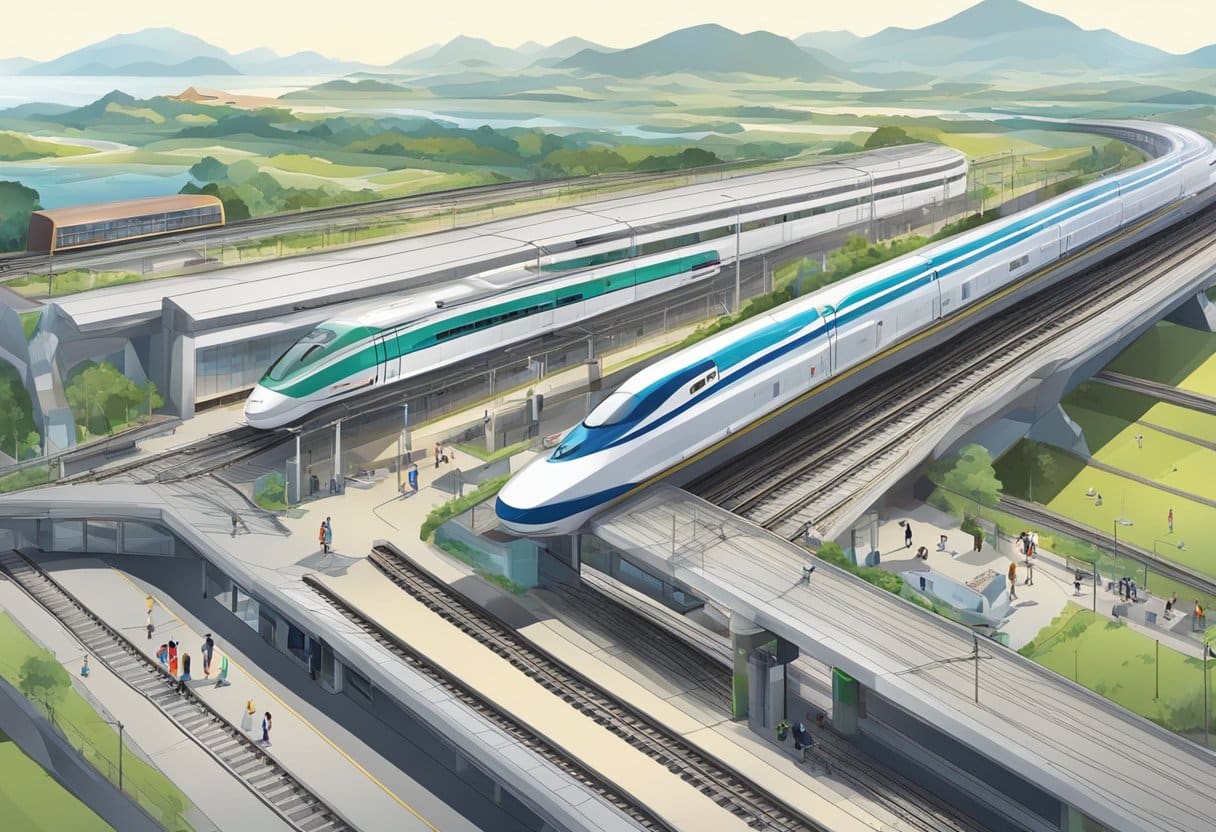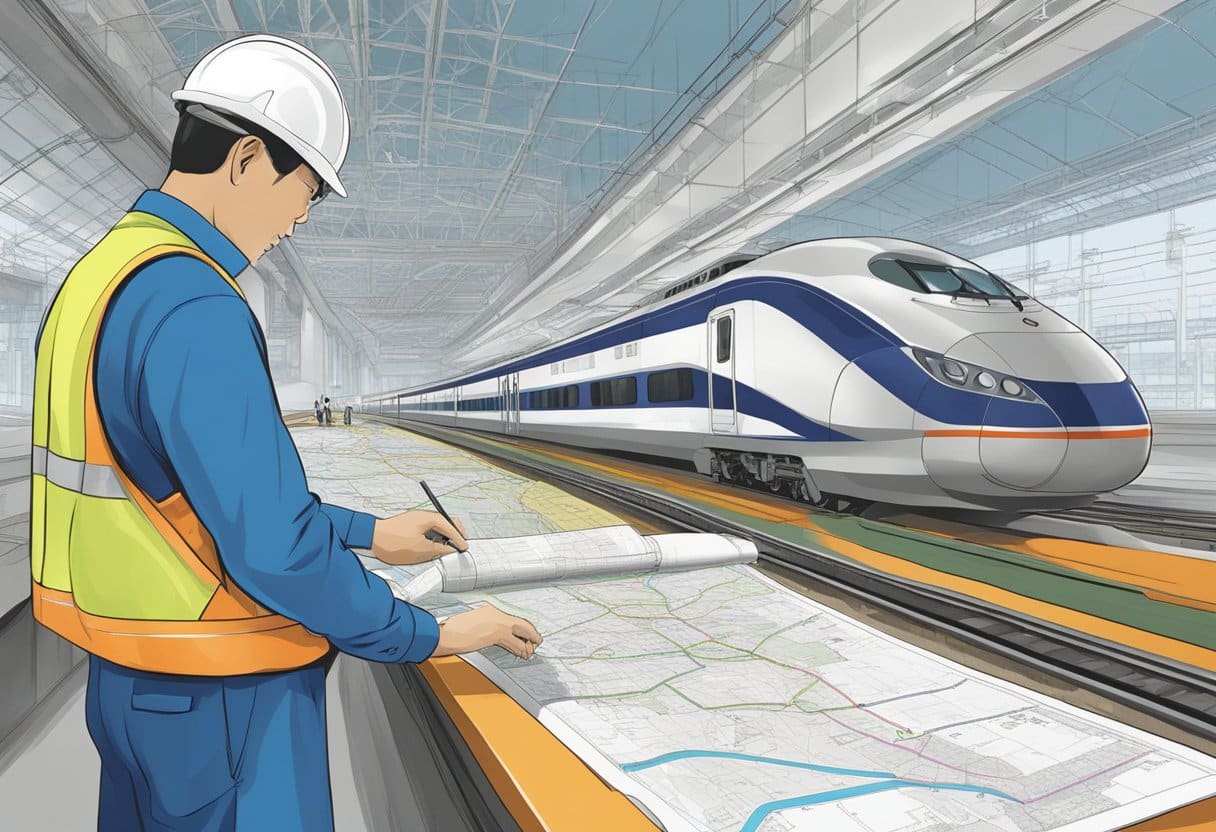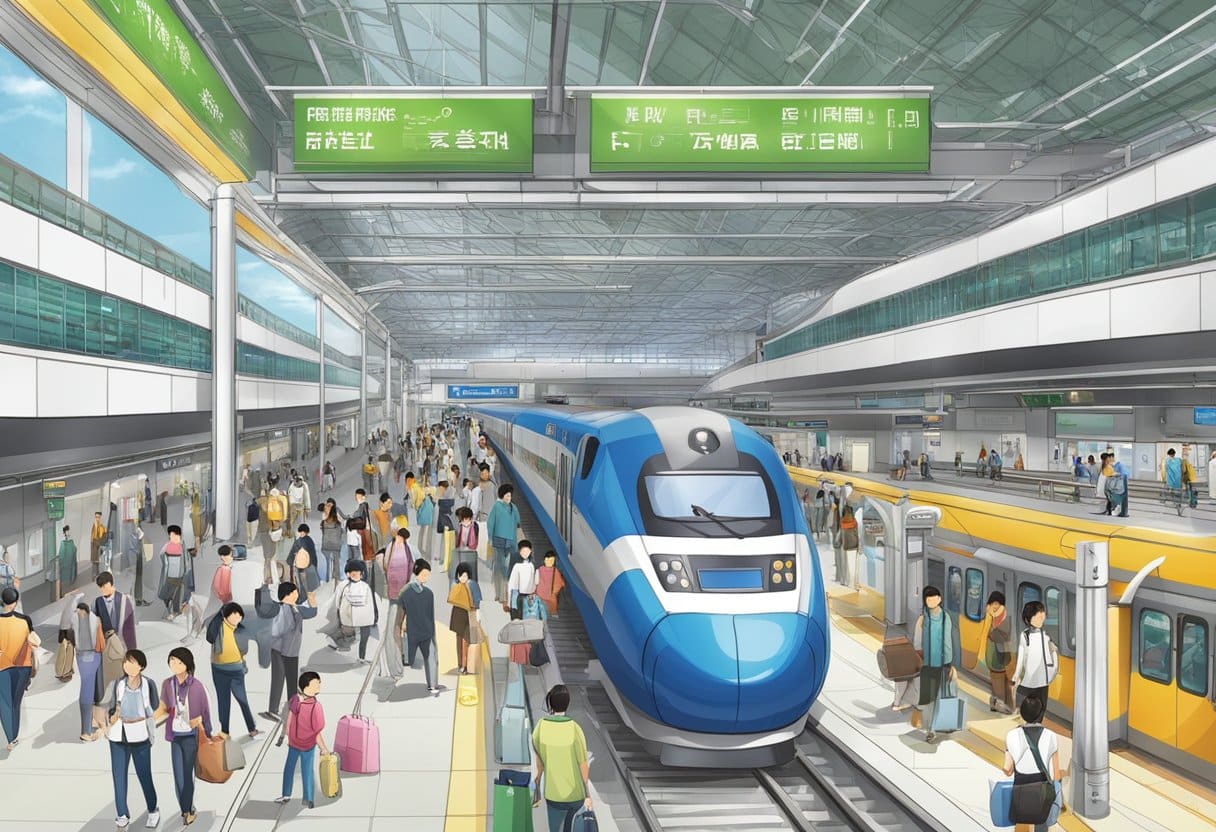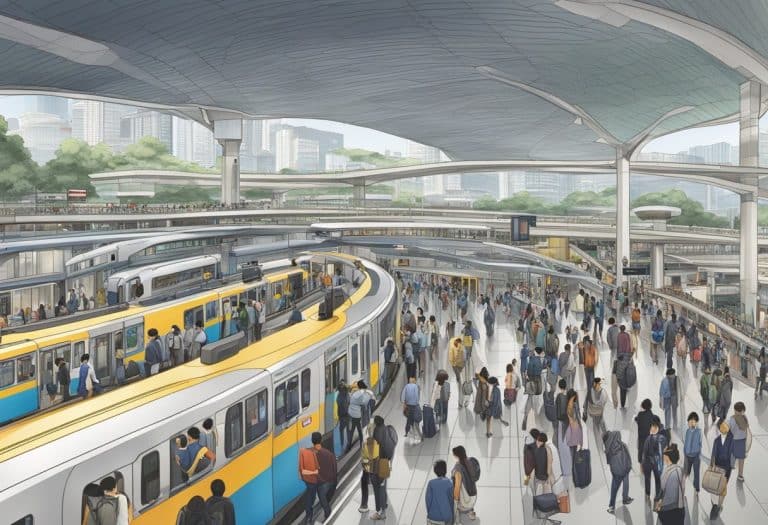Taiwan High Speed Rail: Unveiling the Island’s Modern Transportation Marvel
Taiwan High Speed Rail (THSR) is a hallmark of convenience and efficiency in modern transportation, connecting the island’s major cities from Taipei in the north to Kaohsiung in the south. This state-of-the-art rail network is an embodiment of Taiwan’s commitment to cutting-edge infrastructure and public transit solutions. Since its inauguration, THSR has significantly reduced travel time across Taiwan, allowing passengers to traverse the length of the island in just a few hours.

The impact of THSR on Taiwan’s cultural and economic landscape has been profound. It not only facilitates the swift movement of people and goods but also strengthens economic ties between different regions. The high-speed rail has become an integral part of the daily lives of Taiwanese citizens, making intercity travel a smooth and pleasant experience. Along its route, THSR connects to numerous local transportation networks, enhancing the country’s overall connectivity and making journeys more seamless for travelers.
Key Takeaways
- THSR epitomizes rapid and reliable transport across Taiwan’s main urban centers.
- It has bolstered the economic and cultural cohesion of the island.
- THSR enhances intercity accessibility and enriches the travel experience.
Historical Background
The Taiwan High Speed Rail project, launched in 2007, represented a colossal transportation advancement for Taiwan. It exemplified a bold governmental commitment to modernizing infrastructure through a complex financial structure involving a Build-Operate-Transfer (BOT) model.
Construction and Development
The Taiwan High Speed Rail Corporation was charged with the monumental task of constructing a rail line that would enhance connectivity across the island. Initial plans for this rapid transit system were set in motion to alleviate congestion from highways and conventional railways. Vital to its evolution was the BOT model, where private entities are contracted to build and operate new projects before transferring them back to the government. The construction phase not only foregrounded Taiwan’s capability but also its ambition to significantly reduce travel times between major cities.
Financial Milestones
From a financial perspective, the Taiwan High Speed Rail was a massive investment of NT$ 513.3 billion. The financing entailed a mix of equity, debt, and governmental support. Specifically, the project faced substantial financial burdens from debt, depreciation charges, and interest, which had to be meticulously managed to ensure viability and sustainability. The BOT framework played a key role in this financial structure, with the Taiwan High Speed Rail Corporation handling the nuances of these economic challenges during the operational phase prior to transferring the asset back to the government.
By integrating private sector efficiencies with public interests, Taiwan’s high-speed rail stands as a testament to financial ingenuity and strategic infrastructure development.
Technical Specifications

Taiwan High Speed Rail (THSR) is a showcase of advanced railway technology, combining cutting-edge Japanese Shinkansen technology with rigorous engineering to create a high-speed rail network of remarkable efficiency and speed.
700 Series Shinkansen and Design
The backbone of the THSR is the 700 Series Shinkansen, a fleet that is lauded for its operational excellence. The design of these sleek trainsets is derived from the Japanese Shinkansen, incorporating aerodynamic profiles to reduce noise and power consumption. With a top design speed of 350 km/h (220 mph), the 700T model operates at a maximum service speed of 300 km/h (186 mph), facilitating swift travels from Taipei to Kaohsiung.
Railway Network and Route
The THSR’s railway network extends along the west coast of Taiwan, covering a route that is approximately 345 kilometers long. It effectively bridges major urban centers, from the northern capital of Taipei to the southern hub of Kaohsiung, creating an arterial connection that is vital for both commerce and tourism. The fully double-tracked system ensures efficient and reliable services, often running within minutes to hourly intervals, significantly reducing travel times between the island’s principal cities.
Stations and Connectivity

The Taiwan High Speed Rail (THSR) enhances intercity connectivity with strategically located stations and integrates with other transportation systems, streamlining travel across major cities.
Major Stations Overview
The THSR boasts a comprehensive network that includes major stations such as Taipei in the north, extending through key cities like Taoyuan, Hsinchu, Miaoli, Taichung, Changhua, Yunlin, Chiayi, Tainan, and culminates in Kaohsiung’s Zuoying. Taipei and Zuoying are critical hubs, closely connected to their respective city centers and providing easy transitions to local metros. The Nangang station further extends the northern reach within Taipei.
| City | Station Name | Notable Features |
|---|---|---|
| Taipei | Taipei | Central hub, connected to MRT |
| Nangang | Nangang | Facilitates northern Taipei connectivity |
| Taoyuan | Taoyuan | Near airport, link to conventional rail |
| Hsinchu | Hsinchu | Access to science park |
| Miaoli | Miaoli | Connects a less urban region |
| Taichung | Taichung | Central Taiwan access, convenient for travelers |
| Tainan | Tainan | Southern hub, historical sites |
| Kaohsiung | Zuoying | Terminal station, gateway to the south |
Integration with Other Modes of Transportation
Integration is a highlight of the THSR experience, with stations like Taoyuan offering travelers transitions to the airport through shuttles and taxis. Conventional rail and MRT services are well integrated, especially at stations like Taipei and Zuoying, where travelers can seamlessly transfer to local networks. Intermediate stations primarily situated outside the cities, such as Hsinchu and Chiayi, facilitate access through various transfer options including buses and taxis. This interconnectedness greatly benefits daily commuters and tourists alike, providing a cohesive travel network throughout Taiwan.
Operations and Services

The Taiwan High Speed Rail (THSR) offers a seamless and efficient travel experience with a comprehensive ticketing system and passenger-focused amenities that ensure comfort and convenience throughout the journey.
Ticketing and Pricing
Passengers have various options for purchasing tickets, including ticket counters, ticket vending machines, and affiliated convenience stores. Tickets can be tailored to suit different travel needs with options such as reserved seats to ensure passengers have guaranteed seating. For individuals looking for savings, there are several discounts available, ranging from early bird promotions to group and concession fares for students and seniors, which provide significant ticket price reductions. Detailed ticket price information and discount options can be found online.
Passenger Amenities and Comfort
THSR is renowned for its comfortable seating, allowing travelers to relax during their journey. The high-speed trains boast spacious legroom and cushioned seats, with options for upgraded classes featuring even more amenities. For added convenience, passengers have access to free Wi-Fi, power outlets, and food and beverage services. For those looking to make the most of their travels, the purchase of reserved seats is recommended, giving the assurance of a comfortable journey no matter the distance traveled.
Performance and Efficiency

The Taiwan High Speed Rail (THSR) system exhibits remarkable efficiency and performance, handling mass ridership with commendable punctuality and maintaining impressive speed records.
Ridership and Traffic
THSR has significantly impacted Taiwan’s daily passenger traffic, consistently recording high ridership numbers. With the ability to move huge numbers of passengers efficiently, the rail system quickly reached a milestone of 100 million passengers, and it didn’t take long before it doubled that achievement, surpassing the 200 million passenger mark. It stands as a testament to its operational efficiency and the public’s reliance on its service for intercity travel.
Punctuality and Speed Records
The rail system is not just about accommodating a large number of commuters but also about steadfast punctuality and swift transportation. THSR boasts an impressive track record for being punctual, which is crucial for travelers on a tight schedule. Moreover, maintaining speeds of up to 300 km/h, the rail service holds speed records that make it one of the fastest ways to traverse the island. Travelers can swiftly move between major cities like Taipei and Kaohsiung, greatly reducing travel time for daily commuters and tourists alike.
Expansion Plans

The Taiwan High-Speed Rail (THSR) network continues to see strategic growth with upcoming expansion plans aimed at new routes and improved services. These developments are set to enhance transportation links and contribute to regional growth.
Future Routes and Stations
The ambitious extension project will see the construction of a new 56.4km high-speed line that is anticipated to be operational by 2030. This will stretch from the Nangang station in Taipei to the northeastern coastal city of Yilan, incorporating approximately 11.4km of tunnels. This linkage is expected to significantly reduce travel time and ease congestion on existing roads. The Taiwan approves alignment of Yilan high-speed extension will provide further insights into the impact of this expansion.
Further south, plans are underway for THSR to reach the county of Pingtung, marking a notable enhancement of the network into the southern region of Taiwan. This extension aims to boost local economic activity and connectivity in these areas.
Upgrade Projects
Taiwan’s High-Speed Rail system is not only expanding geographically but is also undergoing improvements to its existing infrastructure. Initiatives include upgrading station facilities and introducing new trains, which will help cater to increasing passenger numbers and raise service standards. These upgrades will bolster the THSR’s ability to offer efficient and punctual services, further solidifying its reputation as a premier transportation option in Taiwan.
Concerns for enhanced capacity and service quality have been met with the proposed introduction of next-generation trains, which will provide a more comfortable and faster travel experience. The expansion into Taitung remains a key interest as the network broadens its reach to integrate more destinations across the island, thus promoting greater accessibility and domestic tourism.
Cultural and Economic Impact
The Taiwan High Speed Rail (HSR) system has profoundly influenced tourism, reshaping the cultural and economic landscape by enhancing accessibility and fostering regional integration. Its development has strengthened ties between major cities, particularly along the west coast, catalyzing a vibrant exchange of culture and business.
Influence on Tourism
Tourism in Taiwan has been significantly bolstered by the efficiency of the High Speed Rail. Cities like Taipei, Taichung, and Kaohsiung are now connected by a service that is not only fast but reliable, reducing travel time dramatically and making day trips between these major hubs feasible for both domestic and international tourists. Destinations like the iconic Taipei 101, the bustling Fengjia Night Market in Taichung, and the serene Love River in Kaohsiung have become more accessible. This increased accessibility is documented in a study which discusses the High-Speed Rail’s impact on urban consumption patterns.
Benefits to Local Communities
The benefits to local communities along the High Speed Rail are multi-dimensional. Not only has the rail system enhanced mobility for residents, it has spurred economic development in previously less accessible areas. Employment opportunities have grown, especially within the service and tourism sectors. Importantly, it facilitates a greater distribution of wealth and resources as it connects the rural and urban divide. For instance, the positive impacts of such connectivity on metropolitan areas’ employment have been explored and found significant, as detailed in a study investigating local development and high speed rail systems.
Customer Experience
Passengers of the Taiwan High-Speed Rail (THSR) often commend the system for its efficiency and the quality of service provided. Regular commuters and tourists alike experience a blend of convenience and comfort that is pivotal for travel satisfaction.
Service Quality
Luggage Handling: Passengers can bring up to two pieces of luggage on board, with dedicated areas for storage ensuring a clutter-free environment. The THSR’s attention to smooth luggage transport exemplifies the service’s focus on traveler ease and security.
Onboard Comfort: The Business Car offers spacious seating with additional amenities such as power outlets and reading lights, catering to business travelers who value a productive yet comfortable journey. Each seat is designed to provide adequate support and legroom.
Customer Interaction: Customer service representatives, recognizable in their uniforms, provide assistance with queries and concerns. These employees are trained to offer help in multiple languages, addressing the needs of international passengers and enhancing overall service quality.
Accessibility Features
Facilities for Disabled Passengers: THSR Trains are equipped with accessibility features such as wheelchair ramps and adapted seating areas. This facilitates a more inclusive travel experience for passengers with disabilities.
Ticketing Options: Various ticket purchasing methods are available, including cash payment at station counters, which cater to those who may not have access to digital payment methods. Early bird discounts, known as 早鳥 promotions, are offered to passengers who book their tickets in advance, providing cost savings to commuters and occasional travelers alike.
Verification Processes: To avail of certain discounted fares, travelers may be required to present a Student ID or other relevant identification. This verification process ensures that benefits are appropriately allocated to eligible passengers, like students and residents of the Matsu region.
Frequently Asked Questions

Taiwan High Speed Rail offers a convenient and fast mode of transportation, with various ticket purchasing methods, pricing options, and amenities to ensure a comfortable journey for travelers.
How can one purchase tickets for Taiwan High Speed Rail?
Tickets for the Taiwan High Speed Rail can be purchased online, at the station’s ticketing machines, or through customer service counters. Additionally, travelers have the option to book tickets via smartphone apps, enabling a seamless purchase process.
What is the price range for Taiwan High Speed Rail tickets?
The ticket prices for the Taiwan High Speed Rail may vary depending on factors like travel date, time, seating class, and distance. Generally, the price range can accommodate budget-friendly options to more premium services, with certain discounts available for specific groups.
What are the operating speeds of Taiwan High Speed Rail trains?
Taiwan High Speed Rail trains operate at speeds of up to 300 km/hour, rapidly connecting major cities across the island, thus drastically reducing travel times and providing an efficient means of transportation.
What amenities are offered in the business class of Taiwan High Speed Rail?
Business class travelers on the Taiwan High Speed Rail can enjoy enhanced amenities including spacious seating, complimentary snacks, drinks, and access to exclusive waiting lounges for a more comfortable travel experience.
How long does it take to travel from Taipei to Kaohsiung on the high-speed train?
The journey from Taipei to Kaohsiung on the high-speed train takes under 100 minutes, making it a swift and convenient option for covering the approximate 350-kilometer distance between the two cities.
Are passengers allowed to consume food on board the Taiwan High Speed Rail?
Yes, passengers are allowed to consume their own food on board the Taiwan High Speed Rail. The service also provides food and beverage for purchase, catering to the needs of travelers during their journey.

